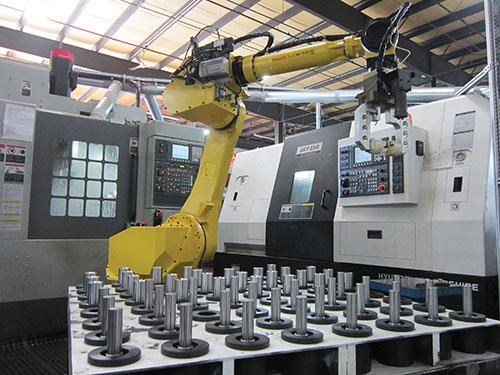Automation Moving Forward
There are numerous factors that suggest that machine-tending robots will soon be much more commonplace in U.S. shops.
Share






Results from our 2014 Top Shops benchmarking survey indicate an increased use of machine-tending robots among successful U.S. shops. (We’ll provide a full report about this year’s survey in a few months.) This parallels statistics recently provided by the Robotic Industries Association (RIA), which reveal two consecutive years of record robot shipments in North America. In 2013, 22,591 robots valued at $1.39 billion were shipped to North American companies, beating the previous record of 20,328 robots valued at $1.29 billion in 2012.
FANUC is no stranger to the advantages of automated processes. During a recent visit to its expansive manufacturing campus in Japan, I chatted with Rick Schneider, president of FANUC America, who continues his “Save Your Factory” campaign urging North American manufacturers to recognize that automation, robotics and lean manufacturing can enable them to be more cost-effective. In this article, he points to the following factors indicating that robots will become more commonplace in U.S. manufacturing facilities:
- Reshoring is real.
- Robot technology continues to advance.
- Automation creates a higher-quality workforce.
Related Content
-
Lean Approach to Automated Machine Tending Delivers Quicker Paths to Success
Almost any shop can automate at least some of its production, even in low-volume, high-mix applications. The key to getting started is finding the simplest solutions that fit your requirements. It helps to work with an automation partner that understands your needs.
-
Increasing Productivity with Digitalization and AI
Job shops are implementing automation and digitalization into workflows to eliminate set up time and increase repeatability in production.
-
Translating a Prototyping Mindset to Production
The experimental mindset that benefited BDE Manufacturing Technologies as a prototype job shop has given it an adaptable edge as a production facility.





















